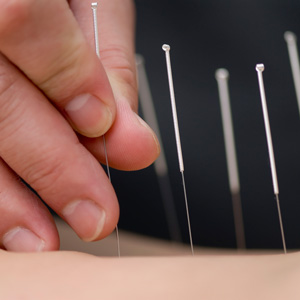Dry Needling at Nedd Chiropractic & Wellness Center
Description
A highly effective form of natural pain therapy for the treatment of a multitude of musculoskeletal and neuromuscular conditions.
How Dry Needling Works
Dry needling technically is not acupuncture (Traditional Chinese Acupuncture) because it is based on neuroanatomy and the modern scientific study of the musculoskeletal and neuromuscular systems.
It involves the insertion of a very fine filament needle (sterile and disposable) through the skin and into deeper tissues that are considered trigger points to pain. It works by causing a very tiny lesion within abnormal or painful tissue which helps to break up knotted or shortened tissues, inhibit painful reflexes from the nervous system to the tissue, and normalize the body’s inflammatory response. This produces an environment that enhances the body’s ability to heal which ultimately reduces pain.
How It Differs From Traditional Chinese Acupuncture
 Dry Needling has developed on the foundation of modern Western medicine which consists of biology, chemistry, and physics plus the subfields molecular biology, physiology, pathology, anatomy, and kinesiology. Dry needling continues to evolve and advance because science continues to advance with new information and technology. The laws of modern medicine are rules nature must live by and as they change so does dry needling which means that it dynamically advances and will not stagnate in its evolution.
Dry Needling has developed on the foundation of modern Western medicine which consists of biology, chemistry, and physics plus the subfields molecular biology, physiology, pathology, anatomy, and kinesiology. Dry needling continues to evolve and advance because science continues to advance with new information and technology. The laws of modern medicine are rules nature must live by and as they change so does dry needling which means that it dynamically advances and will not stagnate in its evolution.
Traditional Chinese acupuncture was developed over 2,500 years ago in ancient agricultural Chinese society. They believed in universal laws based on Chinese agricultural civilization and philosophy that governed everything including the universe, nature, social structure (family, politics, etc.), human body, and health. The 3 primary laws included Yin-Yang, 5 elements, and Chi or Qi. They still believe that if any new information contradicts their universal laws, then the information must be modified to fit into their laws. Unfortunately, this means that Traditional Chinese medicine and acupuncture do not obey modern scientific laws and the scientific method cannot be applied to Traditional Chinese acupuncture. The “laws” of Traditional Chinese acupuncture are human-created concepts representing ancient human thoughts and bias, whereas dry needling techniques are based on the laws of modern medicine. This is the fundamental difference between these two approaches. Despite their differences, both dry needling and Traditional Chinese acupuncture are clinically effective.
Conditions Treated
Dry needling can offer clinical results that other conventional medical techniques may not offer or offer with limited results. Conditions it can help include (but not limited to):
- Neck pain
- Back pain
- Shoulder pain
- Arm pain (including tennis elbow, golfer’s elbow, carpal tunnel syndrome)
- Jaw/TMJ pain
- Headaches (including migraine and tension headaches)
- Buttock pain
- Leg pain (including sciatica, hamstrings strains, calf tightness/spasms)
- Knee, ankle and foot pain
Call today to learn more about Dry Needling and how it can help you.
